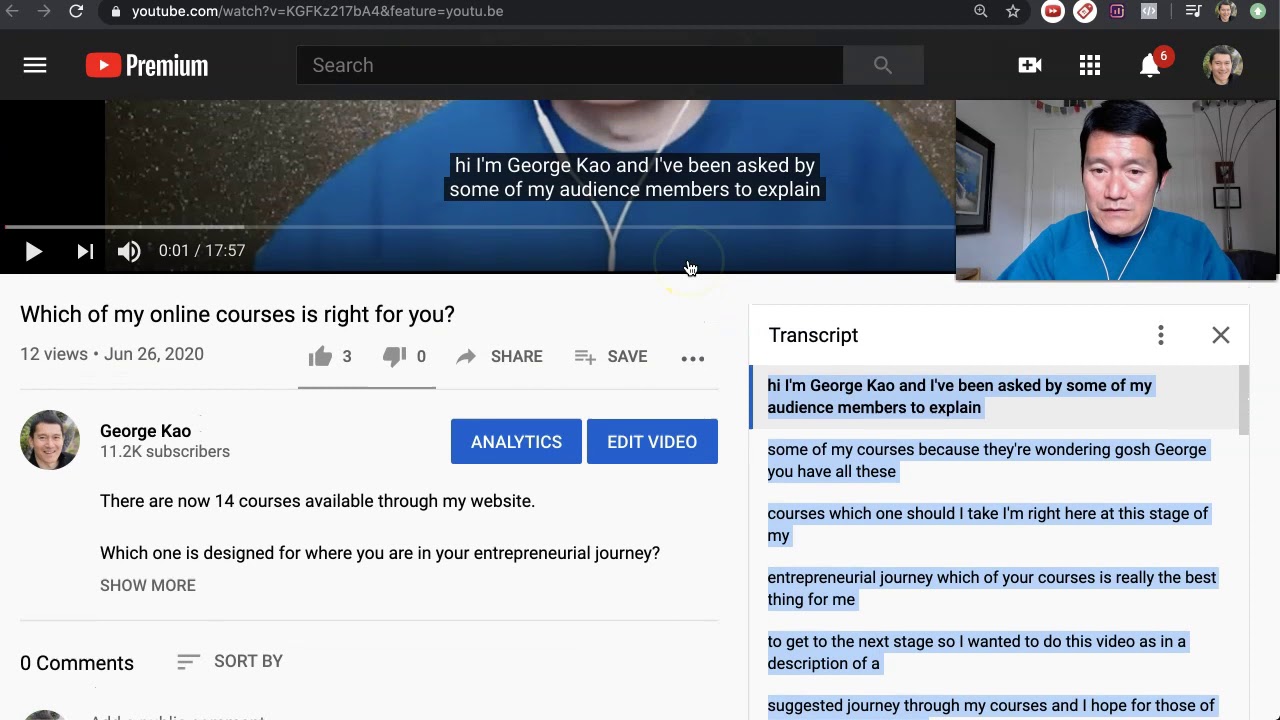
YouTube captions have become an indispensable tool for enhancing accessibility and comprehension on one of the world's largest video-sharing platforms. Captions not only make content accessible to the deaf and hard of hearing community but also aid viewers in understanding videos with heavy accents, technical terminology, or in noisy environments. With the rise of global viewership, captions facilitate understanding across different languages, broadening the audience reach for content creators. This introduction will guide you through 20 intriguing facts about YouTube captions, shedding light on their importance, functionality, and impact on both viewers and creators. From their role in improving SEO rankings to the nuances of automatic vs. manual captioning, these facts will provide a comprehensive overview of how captions contribute to making video content universally accessible and enjoyable.
Understanding YouTube Captions
YouTube captions are a powerful tool for making videos accessible to a wider audience, including those who are deaf or hard of hearing. Captions also benefit viewers who prefer watching videos without sound, perhaps in quiet environments or where noise is not permitted.
-
YouTube automatically generates captions for many videos uploaded to the platform, using advanced speech recognition technology. This feature helps creators reach more viewers without the need for manual transcription.
-
Creators have the option to upload their own custom captions, providing more accuracy and a better viewer experience. Custom captions can include correct spelling, punctuation, and timing that automated captions might not always get right.
The Importance of Captions
Captions extend beyond accessibility; they play a crucial role in comprehension and engagement.
-
Studies show that captions can improve comprehension for viewers, especially those learning a new language or who have different learning preferences.
-
Videos with captions often see higher engagement rates, as they cater to a broader audience. Viewers are more likely to watch a video to completion if they can read along with the audio.
How to Enable and Customize Captions on YouTube
YouTube offers several features for viewers to customize their caption viewing experience.
-
Viewers can turn captions on or off easily via the video player settings. This flexibility allows users to choose when they need captions based on their environment or personal preference.
-
The platform also provides options to change the font size, color, and background of captions. This customization ensures that captions are readable against any video content, enhancing accessibility.
The Evolution of YouTube Captions
Over the years, YouTube's captioning capabilities have seen significant improvements.
-
Initially, YouTube's automatic captions were notorious for inaccuracies. However, with advancements in AI and machine learning, the accuracy of auto-generated captions has improved dramatically.
-
YouTube introduced the ability for viewers to contribute captions to their favorite creators' videos, fostering a community-driven approach to accessibility. Although this feature was later retired, it highlighted the platform's commitment to making content accessible to all.
Challenges and Limitations
Despite advancements, YouTube captions are not without their challenges.
-
Automatic captions still struggle with accurately transcribing certain accents, dialects, and languages, leading to potential misunderstandings.
-
Background noise and overlapping speech can also confuse the captioning AI, resulting in captions that are sometimes out of sync with the audio.
The Future of YouTube Captions
Looking ahead, YouTube continues to invest in improving the captioning experience.
-
Ongoing developments in AI and machine learning promise even more accurate and timely captions, reducing the gap between speech and text.
-
The platform is exploring new technologies to better recognize and differentiate speakers in videos, which would greatly enhance the clarity of captions in multi-speaker formats.
-
There's a growing emphasis on expanding the range of languages supported by automatic captions, making YouTube more inclusive for a global audience.
-
YouTube's commitment to accessibility suggests that we can expect further innovations in captioning, such as real-time translations and more customizable captioning features for viewers.
The Impact of Captions on Content Creators
Captions not only benefit viewers but also content creators by expanding their reach.
-
Including captions can significantly increase a video's searchability. Captions are indexed by search engines, making videos more likely to appear in search results.
-
Content creators who prioritize captioning often see higher viewer retention rates. Captions can keep viewers engaged, especially in content-rich or complex videos.
-
The process of creating captions, whether manually or through editing auto-generated ones, encourages creators to be more mindful of their content's clarity and accessibility.
-
Engaging with the deaf and hard of hearing community through accurate captions can build a loyal viewer base and foster a more inclusive channel culture.
Conclusion
-
YouTube captions serve as a vital tool for enhancing video accessibility, viewer engagement, and content reach.
-
As technology advances, we can anticipate even more sophisticated captioning features, making YouTube an even more inclusive platform for viewers and creators alike.
A Final Note on YouTube Captions
YouTube captions are more than just text on a screen; they're a gateway to inclusivity and understanding in the vast world of online content. Whether you're a content creator looking to expand your audience or a viewer seeking more accessible videos, captions play a crucial role. They not only make videos accessible to the deaf and hard of hearing community but also aid in comprehension for non-native speakers and in noisy environments. Plus, with YouTube's push towards automatic and community-contributed captions, the platform is becoming more inclusive by the day. Remember, every video you caption or enable captions for is a step towards a more inclusive digital space. Let's all do our part in making the internet a better place, one caption at a time.
Was this page helpful?
Our commitment to delivering trustworthy and engaging content is at the heart of what we do. Each fact on our site is contributed by real users like you, bringing a wealth of diverse insights and information. To ensure the highest standards of accuracy and reliability, our dedicated editors meticulously review each submission. This process guarantees that the facts we share are not only fascinating but also credible. Trust in our commitment to quality and authenticity as you explore and learn with us.


